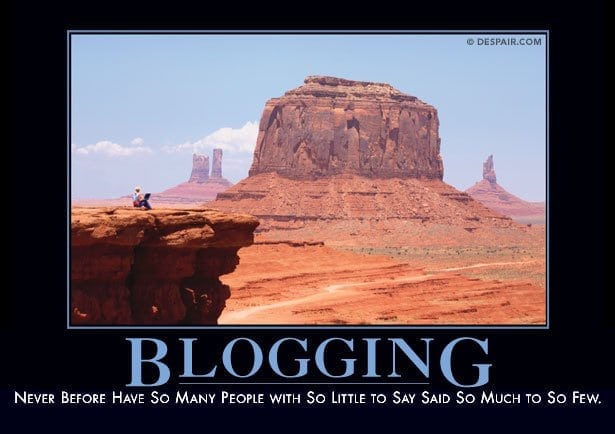
When you go online today, there is some great content – and a deluge of bad, useless or otherwise idiotic content. It is common knowledge that content creation online is exploding and that much of it is not very good. Unfortunately for us all, stupidity has never had such a vast toolkit with which to spread. But who’s really to blame for this?
There are three forces that are driving this proliferation of stupidity online:
- Lazy Marketing. As the costs of marketing online spiral downward, the thought process typically used to be strategic about spending money on media and resources has also reduced. When the costs of creating bad marketing are less, the value of strategic thinking gets undervalued.
- Ubiquitous MicroExpertise. One of the biggest promises the Internet makes is that everyone can be an expert in something. That may be true, but all this “microexpertise” has diminished the perceived importance of “macroexpertise.” In other words, people know one thing really well, but fail to appreciate or focus on the context of how that one thing fits into the rest of the world.
- Ease Of Creation. In a “one button economy,” talent is no longer required for creating content and ideas to share because technology has made it seamless to share instantly. As the Demotivational Poster for Blogging shares, “Never before have so many people with so little to say said so much to so few.”
Thankfully, we can reverse this tide. In fact, there are several signs that it may be reversing already. There are three potential solutions to this problem of stupidity online that are emerging as particularly valuable and that we should all be watching:
Solution #1 – Saving Online Commenting
Some of the worst conversations on the web take place thanks to online commenting – and the biggest crucible of stupidity online for nearly a decade has been YouTube. Comments on YouTube videos have traditionally been useless, racist, or just plain dumb. As a result, I have told clients for many years that enabling comments on YouTube is a completely worthless thing to do. Yet this week, YouTube finally announced a move that should help to improve the quality of comments by forcing users to attach a real identity (via GooglePlus) to what they say rather than allowing them to post anonymously. Many blogs have already made the same choice, using verified comments or requiring users to login via a social network or some third party platform. Thanks to LinkedIn’s new focus on content as well, the comments on posts at LinkedIn Today are probably some of the highest quality business related conversations you are likely to find anywhere online. As more of the largest sites on the web get smarter about adding identity and other smart features to commenting, the value of conversations themselves online can be salvaged, and finally transformed into something valuable for us all.
Solution #2 – Making Curiosity Viral
Despite the growth of media destinations like Buzzfeed that have mastered the art of writing headlines and articles such as “25 Reasons Fall Is The Most Delicious Season” reasons-fall-is-the-most-delicious-season – there are plenty of platforms that use media to inspire and satisfy the natural human emotion of curiosity. One of my favourites, YouTube channel DNews about is created by self described “inspiration junkies” who create videos explaining the curiosities of our world. Another sign of a media destination trying to offer more substance is the recently launched AlJazeera America, which promised “fact based in depth news” – something sadly rare amongst it’s many competitors. What platforms like these illustrate is the demand and need for higher quality content online that actually makes you think versus slideshows of visual candy from pop culture.
Solution #3 – Valuing Curation
The world doesn’t need more content, but we can all certainly use more curation of it into valuable collections that make it more interesting or conversational. A growing number of platforms are now allowing anyone to curate the content online and share it in new ways. This focus on curation as a key skill set is allowing all of us to benefit from those who know a topic deeply enough to bring the best content about it to the surface. Storify is one such platform that allows content from across the web to be collected and retold into a story based format. Other examples are deliberate efforts to condense media into digestible format through email such as what SmartBrief offers or compilations of content creators like what AllTop has offered for many years.
The Bottom Line
As with any problem, the organizations and people with the most at stake will be the ones to create the biggest solutions. The growing problem online for many years has the been the rise of commonplace stupidity in many ways. Today LinkedIn, YouTube, and many other large and small organizations are creating new services, updates and products to help solve this problem. Over time, these solutions will be the ones that allow us to get more value from the time we each spend online and reduce the necessity to constantly filter noise out in every moment. The web may never be free of stupidity – but there are more signs than ever before that we can minimize it.







WE RECENTLY REMOVED COMMENTING - LEARN WHY HERE >